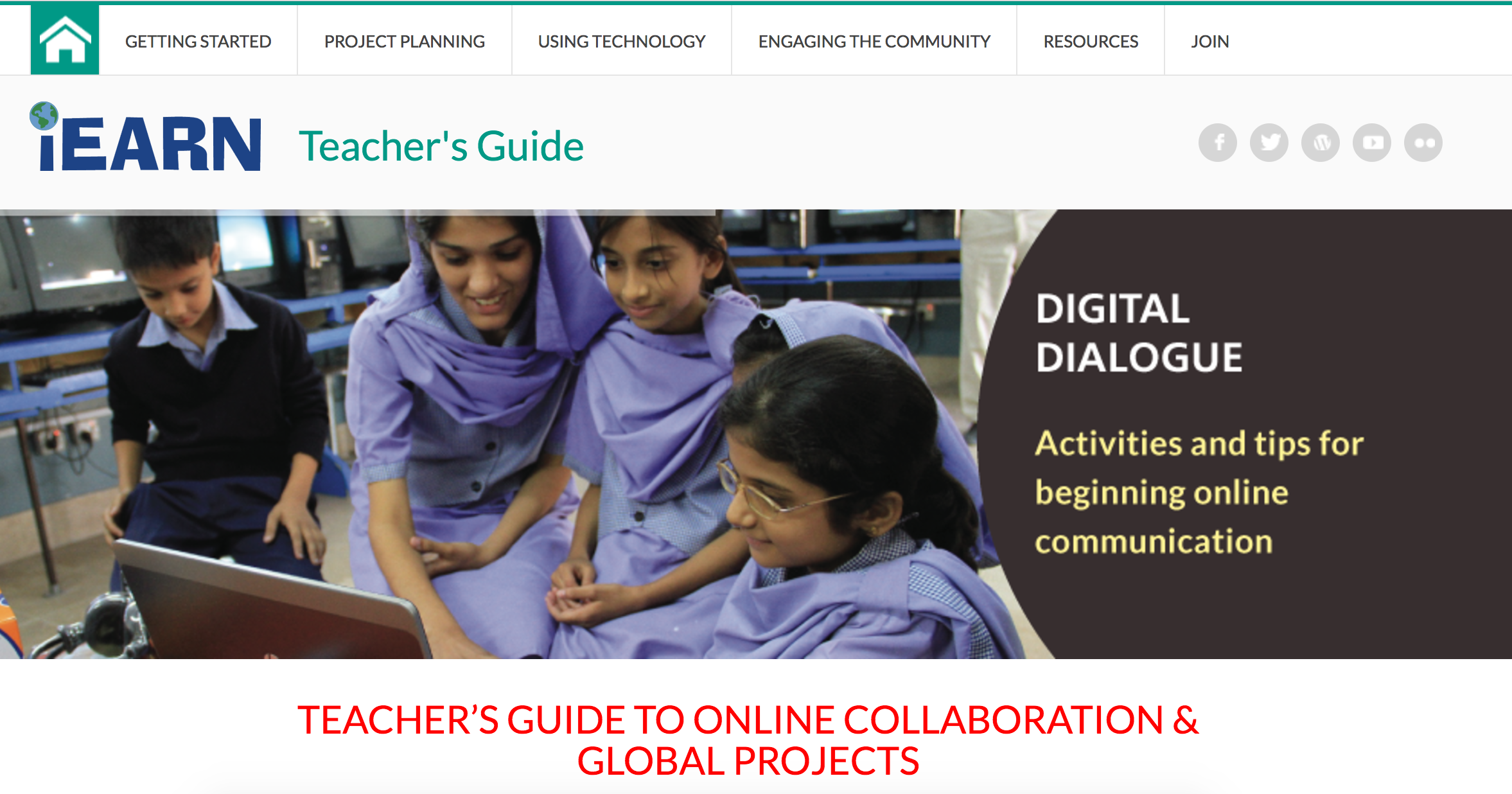iEARN
iEARN is a non-profit organization made up of over 30,000 schools and youth organizations in more than 140 countries. iEARN empowers teachers and young people to work together online using the Internet and other new communications technologies. Over 2,000,000 students each day are engaged in collaborative project work worldwide.

Ositos de Peluche
Un proyecto colaborativo, desarrollado a través de email, para los chicos de todo el mundo.
Ositos de Peluche es un proyecto colaborativo de alcance internacional que fue ideado por la profesora australiana Muriel Wells miembro de la red iEARN Australia (http://www.iearn.org.au) en 1996 y que tiene gran aceptación en aulas de nivel inicial y primer ciclo de nivel primario. A lo largo de los años, participaron del proyecto escuelas de países entre los que se incluyen Alemania, Argentina, Australia, Canadá, Colombia, Costa Rica, Dinamarca, Ecuador, Escocia, Eslovenia, España, Estados Unidos, Estonia, Guatemala, Inglaterra, Irlanda, Letonia, Lituania, Nueva Zelanda, Rumania, Rusia, Sudáfrica, Suecia y Turquía, entre otros.
El proyecto busca fomentar la comprensión entre culturas diferentes y estimular la escritura creativa. Una vez que el docente a cargo del aula se registra y completa un formulario de inscripción un facilitador lo hermana con otra clase para que trabajen juntas. Una vez armada la pareja, cada aula envía a la otra un Osito de Peluche (físico) adquirido o fabricado por docentes, alumnos y/o familiares en una caja a través del correo postal. Usualmente los grupos de alumnos visten al osito con ropa típica de su país o ciudad e incluyen souvenirs para los alumnos y docentes (por ejemplo: llaveros, imanes, golosinas). Cada clase le pone un nombre a su osito, por ejemplo: Timoteo, Francisco, Teddy, etc. Así el osito inicia un viaje de placer y se convierte en un visitante en el aula que lo recibe. Diariamente el osito lleva su diario personal escrito en primera persona en un blog o envía cartas a su grupo de origen contando sus vivencias y aventuras. El diario personal incluye fotografías, videos, audios, dibujos, comics y trabajos artísticos hechos por los alumnos. Una vez finalizado el viaje el osito de peluche vuelve a su lugar llevando regalos para su aula de origen.

Girl Rising - Education for All
1) Participants are encouraged to watch "Girl Rising" (or excerpted chapters at: Nepal Chapter http://youtu.be/Hk2Q7WLzn0s and Peru Chapter http://youtu.be/7P6nL7PXILw if the full DVD is not available) and, then have their students share their reflections after watching it by posting to the Girl Rising forum on iEARN.
[NOTE - Through a partnership with GCE-US (Global Campaign for Education - US), members of iEARN can contact the project facilitators to receive a copy of the movie DVD for free.
2) Students can also read the book "I am Malala" and "Girl Rising: Changing the World One Girl at a Time" and discuss the personal struggles to receive an education.
3) As part of their discussions with other classes, students are encouraged to share ideas about what they can do to ensure that all girls and boys in the world have the right to a quality education. Discussion questions and suggestions for action steps are in the "About/Resources" section of this project.
4) Where possible, participants can arrange Skype video conferences and share their own learning and learn with each other.
* Another available resource is the “Lesson For All” curricula for k-3, 4-6 and high school, as well as a project-based learning module—all written by iEARN educators--that are free and downloadable at: http://campaignforeducationusa.org/pages/educational-curriculum.

Finding Solutions to Hunger
Finding Solutions to Hunger is a project in which students of all ages begin to understand the root causes of hunger in the world and to take meaningful action for its elimination. Aligned with the second UN Sustainable Development Goal, to end hunger, achieve food security and improved nutrition and promote sustainable agriculture, students of all ages, grade levels and English speaking/writing skills bring their strengths and ideas into collaboration with another to find solutions.
Partnered with KIDS (http://www.kidscanmakeadiffere...), an educational program for students, teachers are provided with an optional series of adaptable activities and lessons. They are also supported with resources to create independent lessons of their own that best address the learning needs of their students. To take action against hunger in the world, through understanding and action, is the ultimate goal. Building a network of collaboration, shared knowledge and service happens over time as students study the following concepts, among others, through reading, artistic expression, digital media and writing and reflecting.
EXPECTED OUTCOMES
- To deepen shared understanding of hunger and its root causes through shared reflections (factual, narrative, photo, art, music, video) on the project forum.
- To determine the hunger needs of children and adults across differing cultures and countries.
- To take steps of action based on new knowledge to help eradicate hunger in communities worldwide.
- Publicize student understanding using whatever forms are best available for students in their different school communities.
- Collaborate among students of all participating nations as they build a foundation of shared goals to end hunger.












